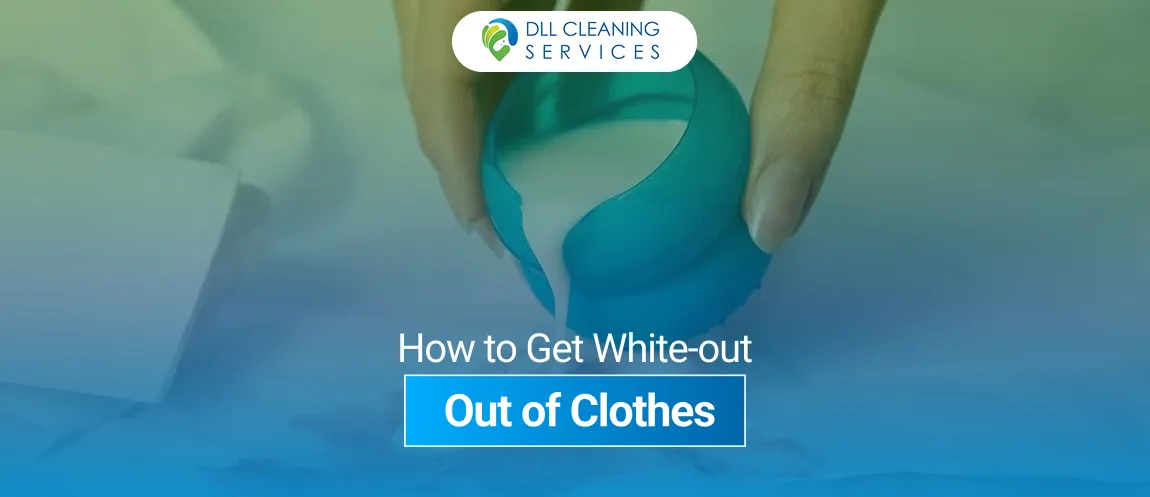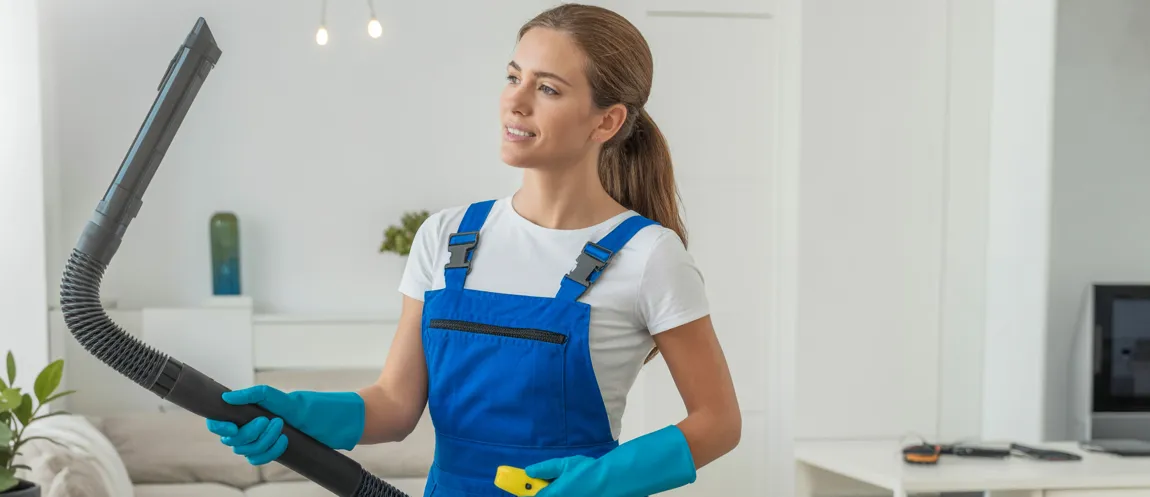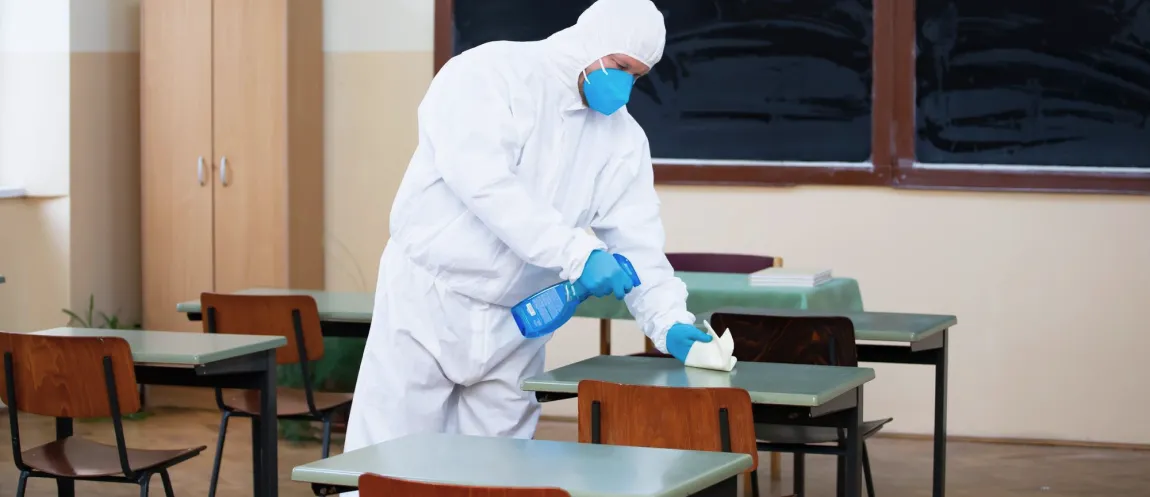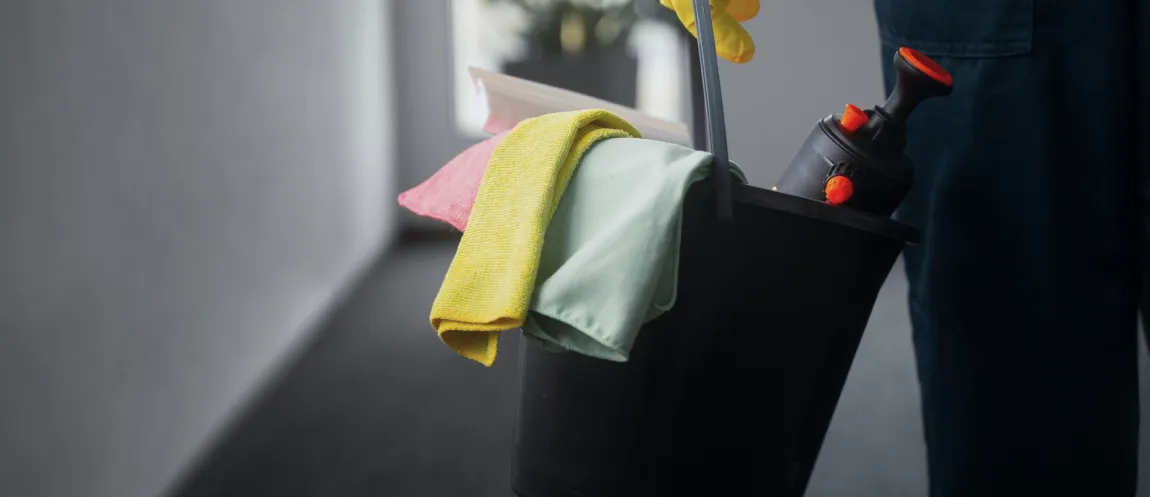Correction fluid accidents are a common office and school mishap that can ruin your favorite clothing items in seconds. Dealing with white-out stains can be frustrating and challenging. If you’ve ever wondered how to get white out out of fabric, you’re not alone. Many people struggle with these stubborn stains that seem impossible to remove once dried. Fortunately, professional cleaning services in USA often deal with such tricky stains and can help restore your clothing to its original condition.
White-out (also known as correction fluid or by brand names like Liquid Paper and Wite-Out) contains fast-drying solvents, titanium dioxide (for the white color), and resins that bind the mixture to paper and unfortunately, to your clothes as well. The good news is that with the right techniques and a bit of persistence, you can successfully remove these stains and restore your garments to their original condition.
This comprehensive guide provides effective methods for removing stains from white clothes that have been dried and specifically addresses how to get whiteout off clothes using various techniques, including homemade stain remover options that don’t require expensive specialty products.
Understanding White-Out Stains
White-out (correction fluid) contains several components that make it particularly challenging to remove from fabrics. The primary ingredients include:
- Titanium dioxide: This creates the white pigment that makes correction fluid opaque
- Resins: These create the binding effect that makes the product stick to paper (and unfortunately to your clothes)
- Solvents: These keep the mixture liquid until applied and then evaporate quickly
When white-out dries on fabric, the solvents evaporate, leaving behind pigments and resins that bond firmly to textile fibers. This makes removal difficult and leads many to ask, “Does white-out wash out of clothes?” The answer depends on factors like the fabric type, how long the stain has set, and the cleaning method used. While at-home remedies may work in some cases, stubborn stains often require professional help. That’s where trusted cleaning services in USA like DLL Cleaning Services can make a difference, especially when dealing with office-related mishaps and stains.
- How quickly you treat the stain (immediate treatment is always more effective)
- The type of fabric affected (natural fibers like cotton may respond differently than synthetics)
- Whether the stain has been heat-set through drying or ironing
- The method you use to tackle the stain
Unlike some water-based stains, white-out won’t simply come out in a normal wash cycle once it’s dried. The good news is that with the right solvents and techniques, even dried white-out stains can be successfully removed from most fabrics.
Essential Supplies for Removing White-Out
Before attempting to get stains out of white clothes, it’s important to gather the right materials. Having these supplies ready before you start will make the process more efficient and increase your chances of success:
- Butter knife or plastic card: For gently scraping off dried excess white-out without damaging the fabric. Credit cards or plastic gift cards work well for this purpose.
- Cotton balls, cotton swabs, or clean white cloth: These are essential for applying solvents to the stain without spreading it further. White cloths are preferred so you can see if the stain is transferring from the garment.
- Rubbing alcohol (91% isopropyl alcohol): This is one of the most effective solvents for breaking down white-out. The higher the percentage of alcohol, the more effective it will be at dissolving the resins in correction fluid.
- Nail polish remover (acetone-based): An alternative solvent that works particularly well on synthetic fabrics. However, always test first as it can damage some delicate fabrics.
- Liquid laundry detergent: Choose a high-quality enzyme-based detergent that’s designed to break down stubborn stains.
- White out stain remover or commercial stain solution: Products specifically formulated for ink and correction fluid stains, such as Amodex or Goo Gone, can be particularly effective on stubborn white-out stains.
- Old toothbrush: A soft-bristled brush will help work the cleaning solution into the fabric fibers without causing damage.
- Paper towels or clean rags: These are needed to blot the stain and absorb the dissolved white-out as you work.
- Bowl of clean water: For rinsing the fabric between treatments.
- Protective gloves: Optional but recommended when working with solvents to protect your skin from irritation.
Read Also: How to Get White-out Out of Clothes
Step-by-Step White-Out Removal Process
1. Scrape Off Excess White-Out
Begin by gently scraping off any excess dried white-out using a butter knife or plastic card. Hold the fabric taut and work from the edges of the stain toward the center to avoid spreading it further. Apply light pressure and use short, careful strokes to lift away as much of the dried material as possible without damaging the fabric. For stubborn stains or delicate fabrics, consider reaching out to a professional Brooklyn cleaning service that specializes in stain removal and garment care.
This preliminary step is crucial to get some out of clothes before applying any liquid solutions. By removing the excess dried correction fluid first, you reduce the amount of material that needs to be dissolved by solvents, making the entire process more effective. For thick globs of dried white-out, you might be able to remove a significant portion this way, especially if the stain is relatively fresh.
2. Apply Alcohol-Based Solution
Rubbing alcohol (isopropyl alcohol) is highly effective for white-out removal (quitar corrector con alcohol). The solvent helps break down the resins that bind the white pigment to the fabric:
- Place a clean white towel or paper towels beneath the stained area to prevent the dissolved stain from transferring to other parts of the garment.
- Dampen a cotton ball or clean cloth with 91% rubbing alcohol. For precision work, especially on small stains, a cotton swab works well.
- Dab the stained area gently, working from the outside edges toward the center. Avoid rubbing vigorously as this can damage fabric fibers and spread the stain.
- For stubborn stains, allow the alcohol to sit on the stain for 5-10 minutes before blotting. The alcohol will gradually dissolve the binding agents in the white-out.
- As you work, you’ll notice white pigment transferring to your cotton ball or cloth. Replace it with a clean one frequently to prevent redepositing the stain.
This method works particularly well if you need to know how to get white out out of fabric that’s delicate. For synthetic fabrics, you might find that acetone-based nail polish remover works more effectively, but always test it on an inconspicuous area first as it can damage some materials.
3. Try a Homemade Stain Remover for Clothes
When commercial products aren’t available, you can create a powerful homemade stain remover by mixing:
- 1 part dish soap (preferably clear, unscented liquid dish soap)
- 2 parts hydrogen peroxide (3% concentration, the standard household strength)
- 1 part baking soda
The science behind this mixture:
- Dish soap helps break down the oils and resins in the white-out
- Hydrogen peroxide acts as a mild bleaching agent that helps lift the white pigment
- Baking soda provides gentle abrasion and helps neutralize any acidic components
Application instructions:
- Mix the ingredients in a small bowl until they form a paste with a consistency similar to toothpaste.
- Apply this paste directly to the stain using an old toothbrush or your finger (wearing gloves).
- Gently work the paste into the fabric using circular motions, focusing on the stained area.
- Let the mixture sit for 30-60 minutes, keeping the area damp by adding a few drops of water if it begins to dry out.
- For colored fabrics, test this solution on an inconspicuous area first, as hydrogen peroxide can cause fading on some dyed materials.
4. Wash and Check
After treating the stain with your chosen method:
- Rinse the treated area thoroughly with cold running water to remove any dissolved white-out and cleaning solutions.
- Apply a small amount of liquid laundry detergent directly to the stain and gently work it in with your fingers.
- Wash the entire garment according to its care instructions, using the warmest water temperature that’s safe for the fabric. Add an enzymatic stain remover to the wash for extra cleaning power.
- Before transferring to the dryer, inspect the garment carefully in good lighting. Hold it up to a light source if necessary to check if the stain is completely gone.
- If any trace of the stain remains, do not put the garment in the dryer, as heat can permanently set any remaining residue, making it nearly impossible to get stains out of white clothes afterward.
5. Repeat If Necessary
For persistent stains, you may need to repeat the process several times. Different aspects of white-out stains (the resins, pigments, and binders) may respond to different treatments:
- If the alcohol method didn’t completely remove the stain, try the homemade paste, or vice versa.
- For particularly stubborn stains, consider alternating between different solvents (rubbing alcohol, nail polish remover, WD-40) with thorough rinsing between applications.
- Allow the fabric to dry completely between treatments so you can accurately assess your progress.
- Be patient and persistent, as some white-out stains require multiple treatments over several days, especially when learning how to remove white out from clothes that have been stained for a while or heat-set through previous washing and drying.
- For white garments that still show faint stains after treatment, a diluted bleach solution (for bleach-safe fabrics only) can help remove the last traces of white-out.
Conclusion
With the right techniques and a bit of patience, it’s possible to completely remove white-out stains from clothing. Whether you opt for commercial products or prefer homemade stain remover solutions, acting quickly and following these steps will help you get stains out of white clothes effectively. Remember, persistence is key when dealing with stubborn correction fluid marks.
Just as stubborn stains require expert knowledge and the right techniques, your home and office spaces deserve professional attention that goes beyond surface cleaning. At DLL Cleaning Services, we bring the same level of detail, expertise, and care to your entire environment that you would use to rescue your favorite garment.
Contact us today for a free consultation and experience the DLL difference firsthand!




